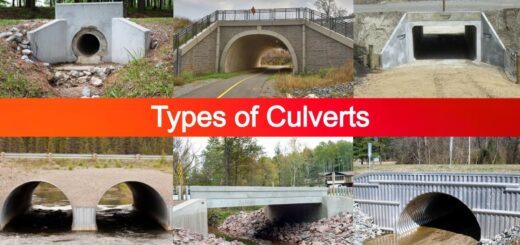13 Types of Partition Walls – Uses, Advantages & Disadvantages [Explained with Details]
![13 Types of Partition Walls - Uses, Advantages & Disadvantages [Explained with Details]](https://engineeringlearn.com/wp-content/uploads/2023/01/Partition-Walls-1024x539.jpg)
What is a Partition Wall?
13 Types of Partition Walls – Uses, Advantages & Disadvantages: – A partition wall is characterized as a wall or division comprised of blocks, studding, glass, or other such material and provided for isolating starting from one room and then onto the next room.
Partition Walls can be developed or constructed as a load-bearing wall or non-load-bearing wall. The load-bearing partition wall is known as the interior wall. These interior walls do not convey any weight. Once in a while partition wall might be folded, collapsible, or fixed type. Partition walls or walls can be constructed in different shapes like – thin, light, thick, heavy, and so on. Chiefly, these walls’ necessities depend on building materials and design.
Different sorts of Partition wall requirements are based on building material and design. It adds character to the entire space. With advancing innovation and design, partition wall materials and partition wall types have expanded throughout the long term. Consolidating these progressions have likewise contributed to adding versatility to the function of the partition walls.
What are the Requirements of a Good Partition Wall?
- Thin in cross-segment so that maximum floor region can be used.
- Provide adequate privacy and security to clients in the room both in regard to sight and sound.
- They are simple in nature, simplicity, and minimal expense in construction having legitimate soundness with the variety of building structures.
- It offers sufficient resistance to fire, heat, dampness, white insect or parasite, and so on.
- Adequately inflexible to take the vibrations caused because of loads.
- Supporting sanitary fittings and heavy fixtures are area of strength adequately.
Uses of Partition Walls
- Partition walls are used for expanding the size of a small room.
- Partition walls are utilized to resist heat transfer.
- They are used for diminishing sound transmission.
- Partition walls are used to provide privacy and security.
- They are used to divide into the number of rooms.
Uses of Partition walls in Homes, office spaces, schools, and colleges:
A) Office Space
Partition walls are in many cases utilized in an office setting that is completely open throughout. They can be utilized to make cubicles and customized office spaces for each employee. With the flexibility of the walls, you can be entirely closed in or some partially closed in, contingent upon preference and need. A benefit for the employers is that the walls keep the employee confined to their workspace.
B) Rooms
Partition walls can separate or isolate two siblings in a room or section of a specific region for various purposes. On the off chance that one of your rooms serves as an office, a partition wall can be set between regions, so there is a barrier between work and rest.
C) Apartments
Apartment landowners are confronting building standard violations with the addition of many partition walls to make more rooms. Numerous renters sign leases with these illegal walls already in place. Tenants likewise are facing privacy and security issues from the destruction of these walls that city authorities say are a fire hazard. The reason apartment owners like to utilize portable partition walls is that they can be brought down or moved around without cosmetic damage to the rental unit.
D) Schools
Partition walls can separate groups of kids during different activities or may even be utilized to isolate classrooms. Some partition walls aren’t sturdy and can cause injury in the event that kids fall or bump into them. The partitions additionally could be accidentally pushed over.
Types of Partition Walls
These days, a building has multi-rooms and the partition walls divide these rooms. To occupy room privacy and security and administration, partition walls are the most ideal decision and may be constructed for different purposes in various types and shapes. Nonetheless, contingent upon building materials, design, and requirements, partition walls can be of different types.
1. Brick Partition Wall: ( Types of Partition Walls )
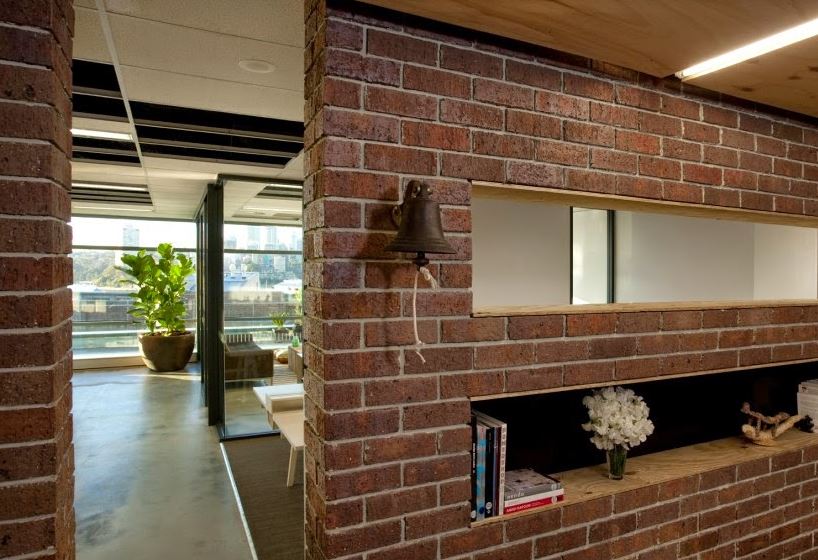
Brick walls are referred to for their stretcher as the wall is plastered on two sides. Raw materials are utilized to make this wall, which makes it economical. They will more often than not be hard, durable, reusable, and recyclable. It likewise accompanies less environmental pollution because of the manufacturing process. Brick Partition walls are just made of plain bricks and can be of three types. For example, Reinforced Bricks, bricks-nogged, or hollow bricks.
The height of the plain brick partition of half brick stiffness isn’t more than 2m. Reinforced brick partition walls reinforce the form of wire mesh or hoop iron or steel bars. The brick nogging partition wall comprises brickwork built up inside within a schema of wooden members.
2. Reinforced Brick Wall: ( Types of Partition Walls )
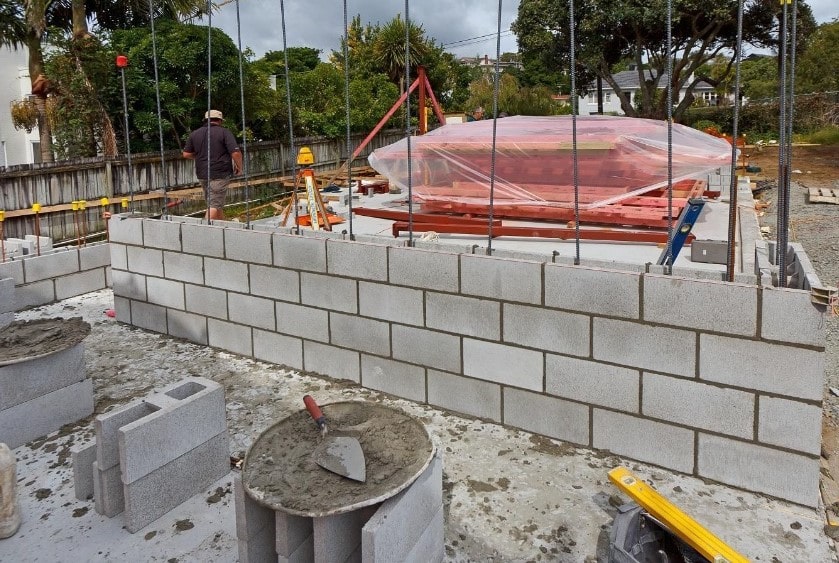
Reinforced brick is substantially more durable because of the placement of reinforcement. Reinforcement, which is in front of wire mesh strips or iron bars, is set at every third or fourth course. The thickness of the wall is equivalent to 10cm or half a brick. The implements utilized for construction are low-tech. It doesn’t require shuttering and cement. This sort of partition wall is used when a superior longitudinal bond is required and when the partition needs to help other superimposed loads.
3. Concrete Partition Wall: ( Types of Partition Walls )
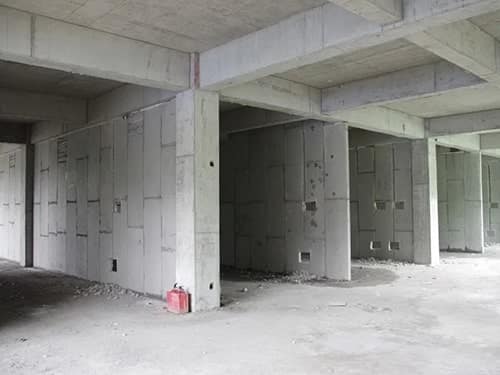
The concrete partition wall comprises a concrete slab, plain or reinforced, upheld horizontally by vertical members. These slabs might be either precast or projected in situ. It very well might be either formed or strongly unmoved.
Unique concrete posts are utilized for the development of constructed concrete partition walls solid in place walls, 10 cm thick and underneath, their social control comprising of soft-cast steel bars put inside the center of the wall thickness. It assists in resisting horizontal loads with preferring seismic tremors to a great extent. Despite the fact that it is rigid and stable both in vertical and horizontal directions, the structure is costly.
4. Glass Partition Wall: ( Types of Partition Walls )
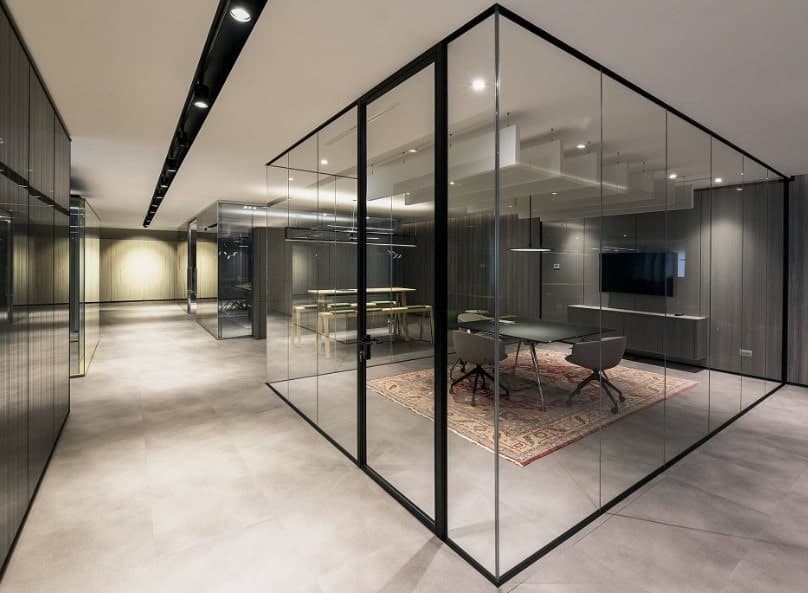
Glass partition walls are comprised of sheet or hollow glass blocks. Glass sheet partition is built by fixing a sheet of glass in a wooden structural design. Hollow glass blocks are clear glass units that are lightweight and manufactured in various thicknesses, shapes, and sizes. Glass partition walls are modest, available in development, and give sensible protection and security. It offers sensible aesthetics, and permits lightweight. This kind of wall is damp, sound, and warmth proof, and easy to wash and maintain.
5. Hollow & Clay Brick Partition Wall: ( Types of Partition Walls )
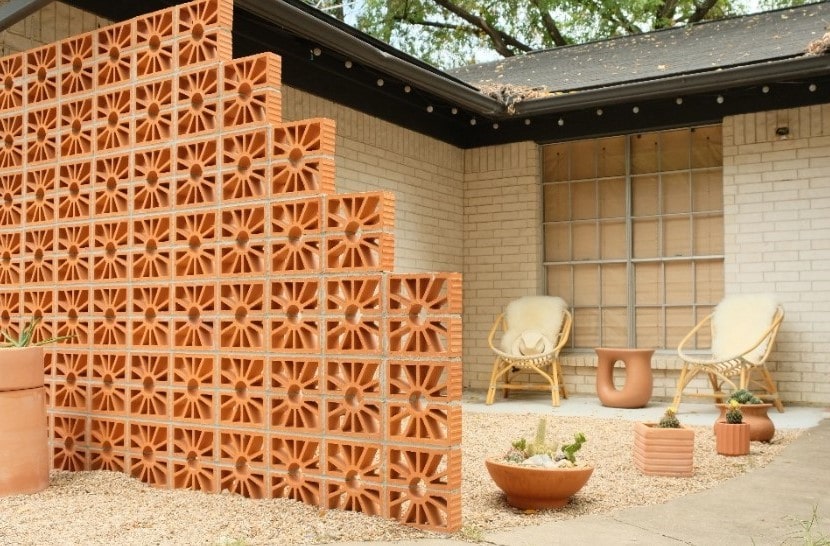
Hollow concrete or substantial block partitions are designed for individual units of concrete. Clay blocks utilized are well ready from clay or ceramic, and that they are either solids or hollow. Hollow clay blocks of section 30*20 cm with thickness varied from five cm to 15 cm could as a matter of fact be used.
The blocks are supplied with grooves on the prime, base, and sides, and surfaces are kept covered in a couple of varieties. They don’t change their volume and are lighter in weight. These varieties of walls are lightweight, economical, durable, solid, and fireplace resistant.
6. Plaster Slab Partition Wall: ( Types of Partition Walls )
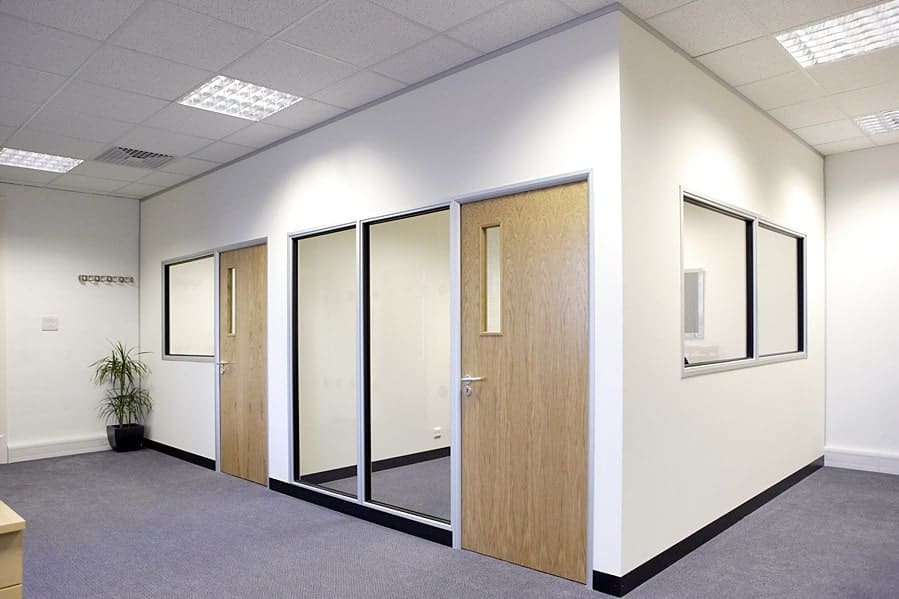
Plaster slab partition walls are manufactured from burnt or consumed minerals or plaster of Paris, mixed with wood. This sort of partition wall is 5cm to 10cm thick slabs that are prepared in iron or timber molds. within the plaster slabs, fitting sections are given to create rigid joints. During this partition, walls, nails, and screws are frequently basically crashed into these slabs. The plaster slab surface of this partition wall might be left smooth or rough, and the formwork isn’t plastered. Be that as it may, the rough surface goes about as a key for the plaster.
7. Straw Board Partition Wall: ( Types of Partition Walls )
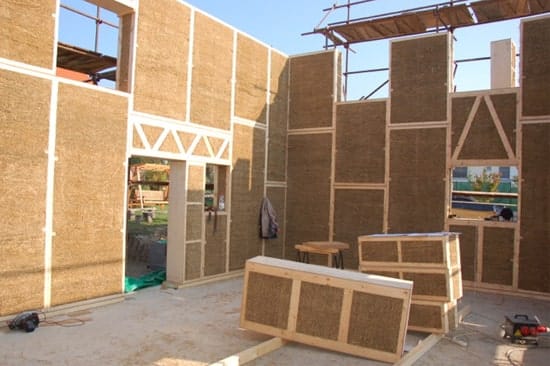
Straw Board partition walls are valuable where the transference of partitions is incessant. This sort of partition wall is made of compressed straw-shrouded thick paper or hardboard. Straw board parcel walls are heat-sound evidence and simple to build.
8. Wooden Partition Wall: ( Types of Partition Walls )
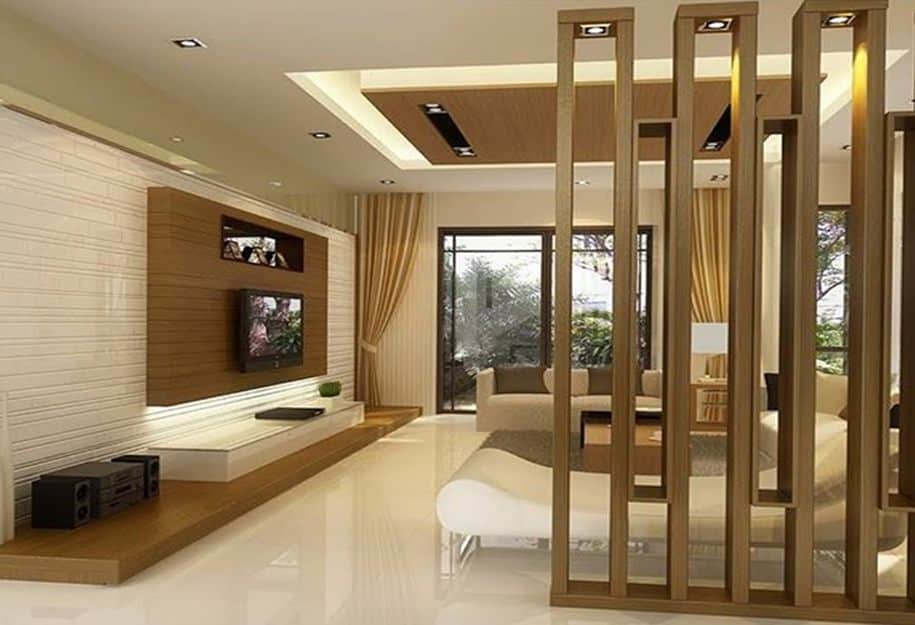
Wooden partition walls are lighter in weight and easy to construct, neither sound-proof nor fire resistant. This partition wall isn’t appropriate to damp locations. Wooden partitions contain wooden edges that are connected to a sidewall and secured to the floor. You can cover the divider with sheets or mortar on the different sides to make a strong partition.
Wood partition walls are of two types –
- Common Partitions
- Trussed Partitions.
Standard partitions are made out of vertical members alluded to as studs bridged between the higher horizontal (head) and lower horizontal (ledge) members. Trusted partitions are designed on the principle of the truss and are useful wherever it is achievable to produce solely. Wood partitions are lightweight and simple to construct, yet they are prone to spoiling, and bug infestation and are not fire-proof either.
9. Lumber Partition Wall: ( Types of Partition Walls )
Lumber partitions are the wood framework that is supported on the ground underneath or by sidewalls. The structure comprises a rigid arrangement of timber members, which can be plastered or lined with boarding and so forth from each side. It isn’t noncombustible.
10. Metal Lath Partition Wall: ( Types of Partition Walls )
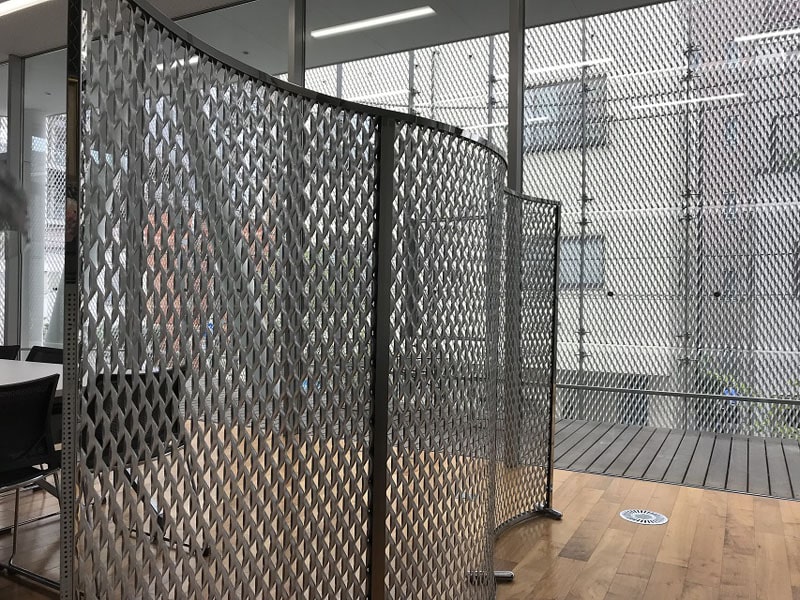
Metal lath partition walls are skinny, strong, durable, and inconsiderably incombustible. It needs a structure of steel or timber for fixing it in position. Lath is attached or joined by galvanized iron wire to delicate cast steel bars or channels separated 15 to 30 cm apart. It will be plastered on both sides and perhaps further improved insulation against heat and sound. The metal lath and plaster partition walls-cavity.
11. Asbestos Cement Partition Wall: ( Types of Partition Walls )

Asbestos cement partitions are lightweight in weight, impenetrable, durable, watertight, and flame resistant. Asbestos concrete sheets are produced of asbestos concrete sheets and fixed into the timber framework. Sheets are fixed in position and connected with cement adhesive. They are principally adopted in works of a transitory character.
12. A.C. Sheet or G.I. Sheet Partition Wall: ( Types of Partition Walls )
These portions wall are economical and affordable, light-weight, and rigid if appropriately created. It is fastened or affixed to the border of wood or steel. Each slab comprises a core or furrowed asbestos concrete sheet (5mm) with the plain asbestos concrete sheet (10mm) connected with that on the other facet.
13. Double Glazed Window: ( Types of Partition Walls )
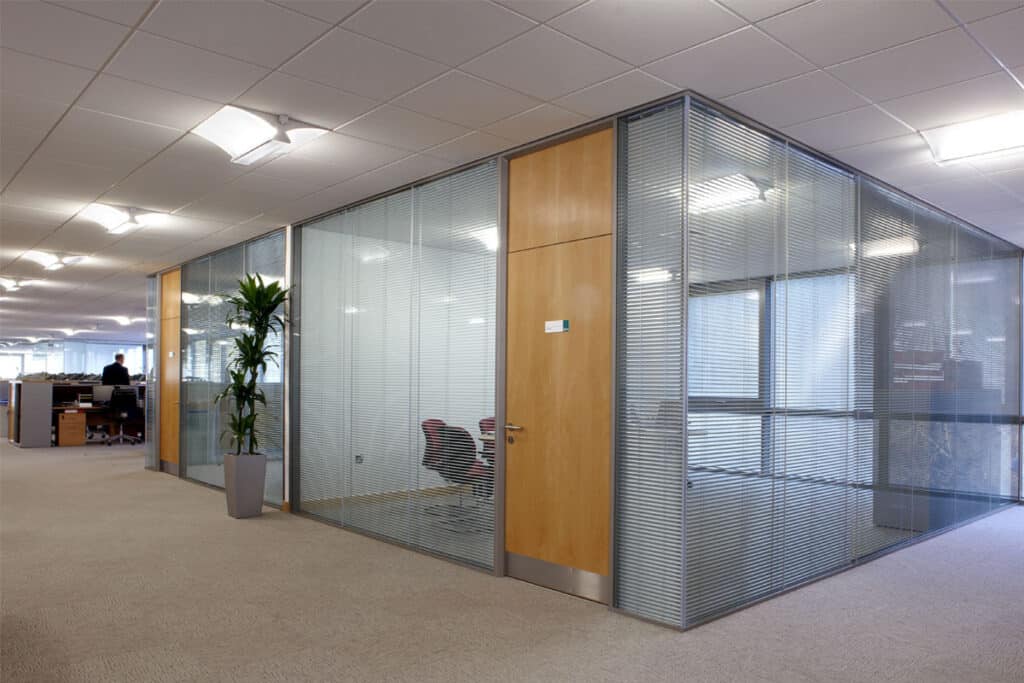
A double-glazed window is utilized for acoustic insulation. During this window, air capacity between two sheets is kept at 50mm or a lot. The air contained among the thin depression is fairly ‘stiff’ and transmits vibration at low frequencies. Precise joints give this framework a “frameless” glazed look. Double glazed window partition walls are broadly utilized in all workplaces, private meeting areas, and board rooms.
What are the Factors Affecting the Construction of Partition Walls?
The factors affecting the construction of partition walls are:
- Self-weight of partition walls
- The Cost of partition walls
- The speed of installation
- The availability of material
- The durability and flexibility of partition walls
- The ease of configuration
- Requirement of sound resistance
- The need to act as a structural support
Advantages of Partition Walls
The advantage of partition walls is remarkably needed for a building’s room design and division. Nonetheless, partition walls have different functions and benefits. For example,
- Partition walls divide the entire region into many rooms.
- Partition walls provide privacy and security to the inmates from sight and sound.
- Partition walls are light in weight and less expensive in the cost of construction.
- They occupy less area
- They can be effectively constructed in any position.
- They are constructed from light, sound, uniform, homogeneous, sturdy, and sound-insulating materials.
- Partition walls are simple, easy, and prudent in construction having proper lucidness with the type of building structure
- Partition walls offers sufficient resistance against fire, heat, dampness, white ant or parasite, and so on.
- Adequately unbending to take the vibrations caused because of loads.
- The partition walls are strong enough to support sanitary fittings and heavy apparatuses.
Disadvantages of Partition Wall
- It can’t be used in high seismic zones.
- Bricks retain water at a rapid pace, in this way, they can cause fluorescence when not exposed to air.
- The rough surfaces of bricks can cause mold growth and development while possibly not appropriately cleaned.
- Cleaning brick surfaces is troublesome work.
- Shades or colors of bad quality brick change when comes to the sun for an extensive period.
- Partition walls can be a time-consuming construction.
Conclusion
Partition walls are a great decision to create separation and privacy within a space. With the wide variety of materials accessible in the market, you have a lot of choices that fit right for your financial plan and requirement. The utilization of good quality raw materials and appropriate post-construction care will assist you with keeping up with the partition walls better. Partition walls have many uses in the workplace, at home, or in school. They create privacy and personal work areas. They can divide or isolate classrooms or gatherings of children in school settings. They likewise can divide rooms in a home.
Content Source: – civiltoday, propertygeek, dreamcivil
Image Source: – theconstructor, gharpedia, vetroin, clayimports, propertygeek, houseplanninghelp, homebazaar, kentemesh, avantisystemsusa

